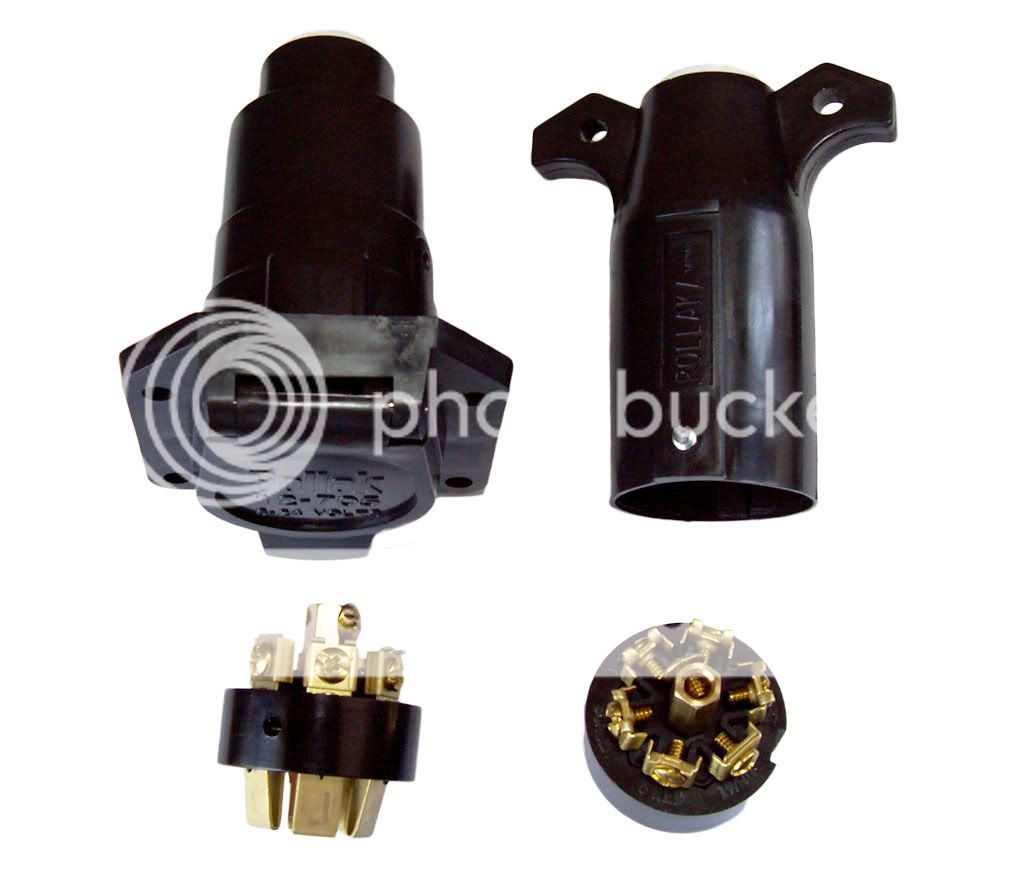Dipnet
Registered Member
- City
- Silverdale
So what do you guys use to maintain a good electrical connection in the plug for the trailer?
It seems like every-time I want to get my 17 ft. Triumph ready for an outing the trailer lights aren't all working and it's always due to the connector.
Case in point: knowing I was going to hit Puget Sound yesterday, on a quiet day last week, I backed the truck up to the trailer tongue and plugged in the connection. Result: no brake lights and no right turn signal.
So (AGAIN!) I got out electrical contact cleaner spray, a small round file and some sandpaper. Proceeded to clean all the pins and receivers on my 4-pin flat connector system. After a few minutes of cleaning, Hoorah!, we had lights.
So the night prior to the trip I again hooked up the trailer. Even though it's only been less than a week, again I had malfunctioning lights!
Went through the same exercise with file, sandpaper and cleaner and got them working but damn, I get tired of this!
Would some dielectric grease cure this issue? To my understanding dielectric grease is non-conductive so would too much exacerbate the problem?
Granted, this boat is usually used in salt water and I know that doesn't help the issue. But I always rinse everything down well after a trip and spray either WD-40 or contact cleaner in/on both sides of the plug.
If anyone has the secret to getting rid of this aggravation I'd appreciate it!
It seems like every-time I want to get my 17 ft. Triumph ready for an outing the trailer lights aren't all working and it's always due to the connector.
Case in point: knowing I was going to hit Puget Sound yesterday, on a quiet day last week, I backed the truck up to the trailer tongue and plugged in the connection. Result: no brake lights and no right turn signal.
So (AGAIN!) I got out electrical contact cleaner spray, a small round file and some sandpaper. Proceeded to clean all the pins and receivers on my 4-pin flat connector system. After a few minutes of cleaning, Hoorah!, we had lights.
So the night prior to the trip I again hooked up the trailer. Even though it's only been less than a week, again I had malfunctioning lights!
Went through the same exercise with file, sandpaper and cleaner and got them working but damn, I get tired of this!
Would some dielectric grease cure this issue? To my understanding dielectric grease is non-conductive so would too much exacerbate the problem?
Granted, this boat is usually used in salt water and I know that doesn't help the issue. But I always rinse everything down well after a trip and spray either WD-40 or contact cleaner in/on both sides of the plug.
If anyone has the secret to getting rid of this aggravation I'd appreciate it!

